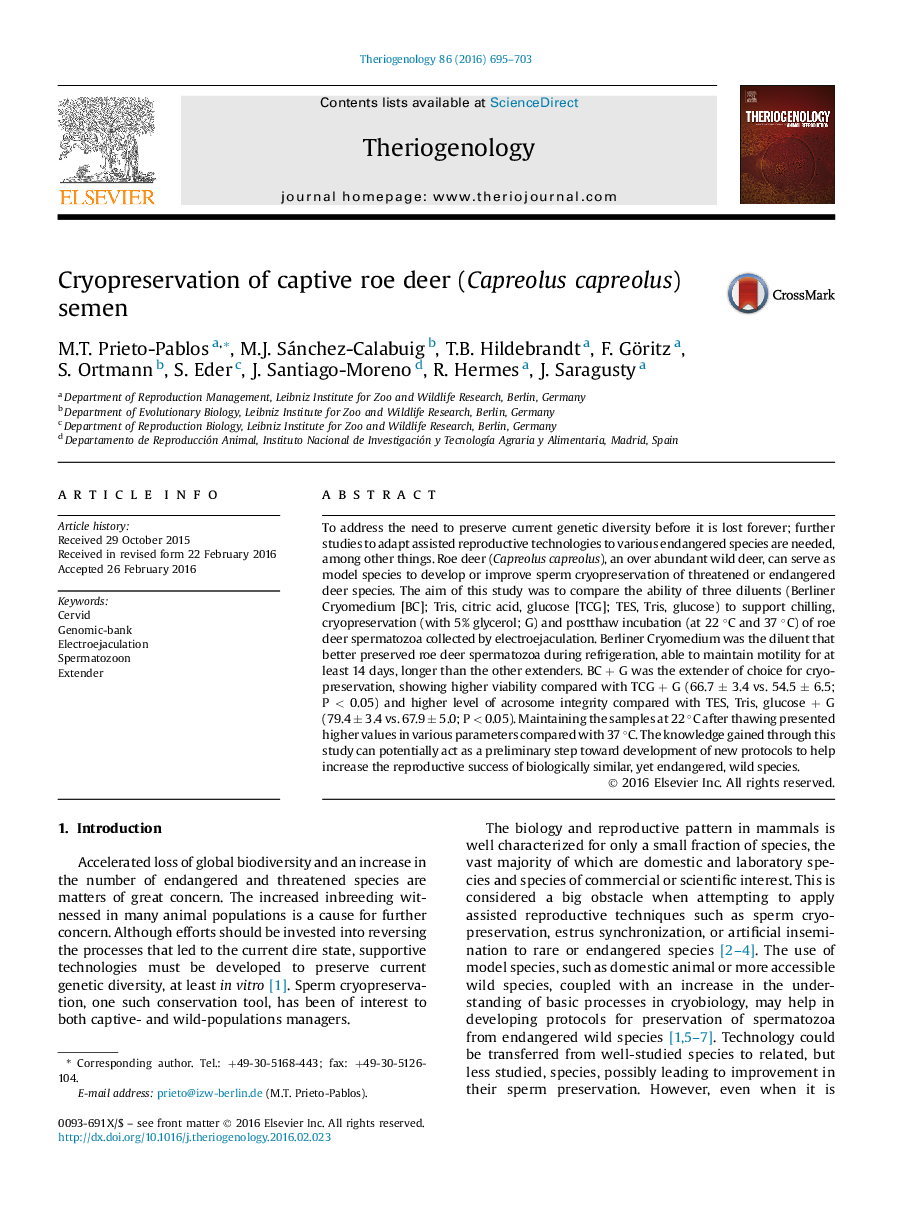| Article ID | Journal | Published Year | Pages | File Type |
|---|---|---|---|---|
| 2094953 | Theriogenology | 2016 | 9 Pages |
To address the need to preserve current genetic diversity before it is lost forever; further studies to adapt assisted reproductive technologies to various endangered species are needed, among other things. Roe deer (Capreolus capreolus), an over abundant wild deer, can serve as model species to develop or improve sperm cryopreservation of threatened or endangered deer species. The aim of this study was to compare the ability of three diluents (Berliner Cryomedium [BC]; Tris, citric acid, glucose [TCG]; TES, Tris, glucose) to support chilling, cryopreservation (with 5% glycerol; G) and postthaw incubation (at 22 °C and 37 °C) of roe deer spermatozoa collected by electroejaculation. Berliner Cryomedium was the diluent that better preserved roe deer spermatozoa during refrigeration, able to maintain motility for at least 14 days, longer than the other extenders. BC + G was the extender of choice for cryopreservation, showing higher viability compared with TCG + G (66.7 ± 3.4 vs. 54.5 ± 6.5; P < 0.05) and higher level of acrosome integrity compared with TES, Tris, glucose + G (79.4 ± 3.4 vs. 67.9 ± 5.0; P < 0.05). Maintaining the samples at 22 °C after thawing presented higher values in various parameters compared with 37 °C. The knowledge gained through this study can potentially act as a preliminary step toward development of new protocols to help increase the reproductive success of biologically similar, yet endangered, wild species.
